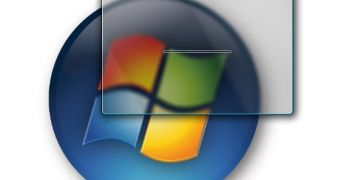One aspect that is inherently associated with the evolution of the Windows platform is the redesigning of the operating system's graphical user interface. From Windows XP to Windows Vista, this evolution was marked through the introduction of Windows Aero. For the time being Windows Aero has survived into Windows 7 Milestone 1 Ultimate edition. But in the future, the graphical user interface of Windows 7 could go in the same direction of the UI of the Office 2007 System, namely the Fluent/Ribbon.
"I'll mention that with Office 2007 the Fluent UI with the ribbon represented a major risk that Microsoft took, after all, for many years that File, Edit, View menu that we had created in our Windows and Mac applications, that was the standard way things were done," Gates stated. "And yet we saw that that was hiding the functionality, the fact that you had those dropdowns were getting longer, and longer, and you weren't even sure which menu things were underneath. It meant that many of the features we were being asked to put in our applications were features that were already in the applications."
One thing is clear about the Fluent/Ribbon graphical user interface. It is nothing short of a hit with Office 7. So much so that Microsoft has implemented a similar concept in Office 2008 for Mac. Additionally, the Redmond company is also licensing the Ribbon/Fluent to third-party developers in a subtle effort to make it into a standard of functionality that will be inherently associated with the Office System.
"And so we said, well, if we don't change the UI, what is it we're going to do to make sure people are getting X of these, say, formatting capabilities. And the answer was that we really needed to do something different. And so the Ribbon was that change. We usability tested it massively, and fortunately it has had a very strong positive reaction," Gates added.
Now, if you are thinking that Fluent/Ribbon will remain limited to Office 2007, Office 14 and above, then you'll be happy to know that is not the case. Microsoft is looking to made the Fluent/Ribbon graphical user interface an integral part of the Windows 7 experience. Still, there is one catch.
"So we're very pleased to see that, and we're pleased to see people taking this and building their applications. In fact, we in the next version of Windows will be using this fluent UI quite a bit across a number of applications. And so the Ribbon really got started with Office 2007, but we see it spreading to all the really neat client applications. It turns out it's the user interface that works very well for the pen and touch as well as being a better way of revealing application functionality," Gates promised. (emphasis added)
So, Windows 7 will indeed feature the Fluent/Ribbon UI. But will it do so only via the applications and default programs that ship as built-in components? Or will users be able to enjoy a highly evolved Windows Aero - Fluent/Ribbon hybrid? One detail that points into this direction is the move of Julie Larson-Green, Corporate Vice President, Windows Experience Program Management, from the Office project to Windows. Julie Larson-Green is the one responsible for the Office 2007 System's Fluent/Ribbon interface.
And according to her official bio, she is hard at work on the design of Windows 7. "As corporate vice president of program management for the Windows Experience at Microsoft, Julie Larson-Green oversees the design for the Microsoft Windows operating system. Her responsibilities include the end-user interaction design and overall experience for the Windows products after the release of Windows Vista, which will be available in 2007. She is responsible for program management, product design, usability and product planning within the engineering organization in the Microsoft Platform and Services Division under President Kevin Johnson," Microsoft revealed.

 14 DAY TRIAL //
14 DAY TRIAL //